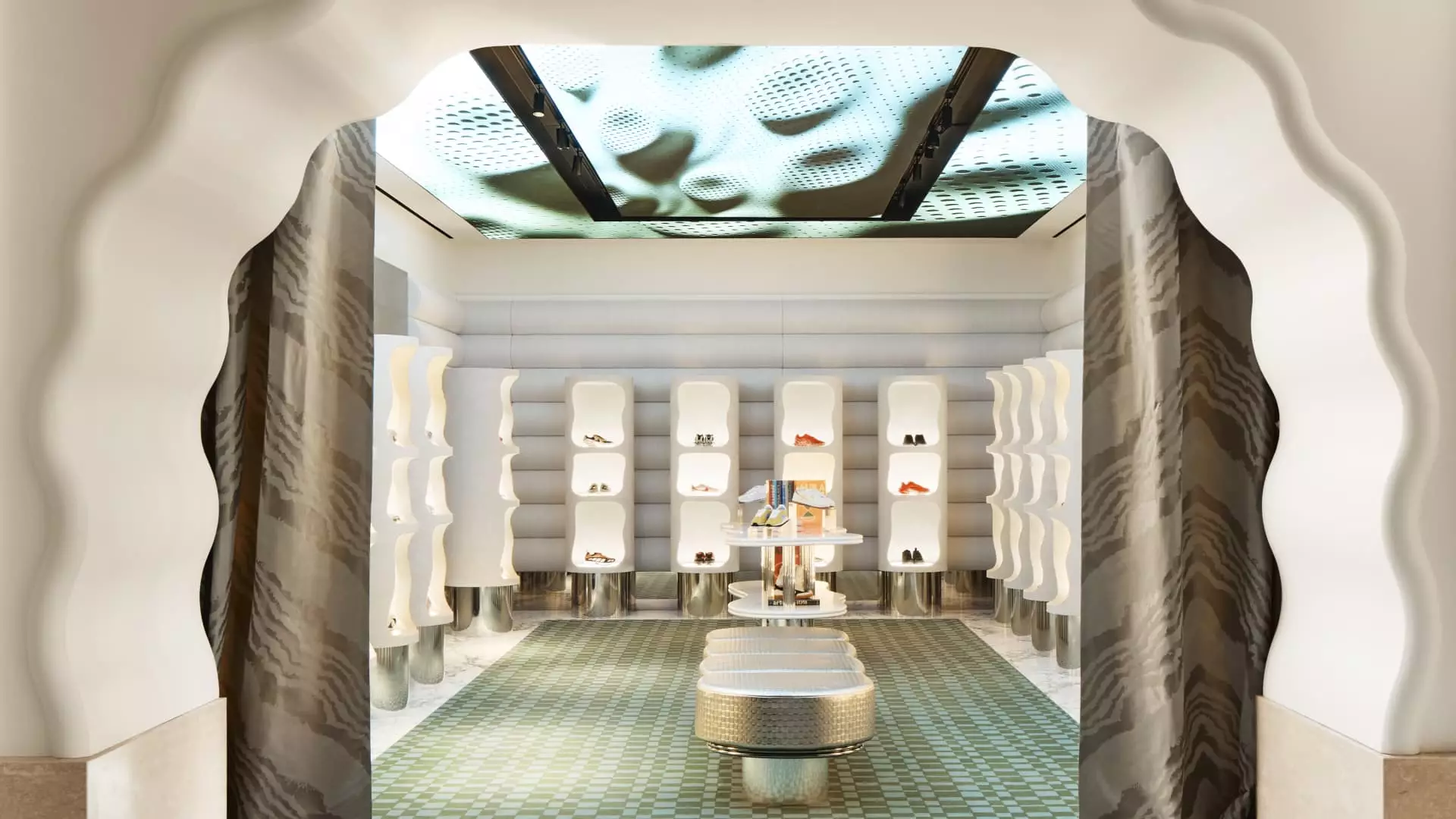In a striking move that intertwines sophistication with consumerism, French luxury retailer Printemps opened its first U.S. store in New York City this week, coinciding with the arrival of spring, its namesake season. This audacious expansion marks a pivotal moment in American luxury retail, where a bold European brand seeks to redefine the shopping experience in the heart of the Financial District. The 55,000-square-foot store isn’t just a shopping destination; it’s a statement—a beautiful reminder that luxury doesn’t have to be dauntingly exclusive.
Yet, while the roof beams resound with potential, the question remains: can Printemps succeed in a landscape where discretionary spending is teetering on a tightrope? As inflation looms like an unwanted ghost, the risk of failure is palpable.
The Allure of Exclusivity
Printemps aims to dazzle consumers by offering around 25% of brands that are either rare or nonexistent in the U.S. market. This includes names like Joseph Duclos, famous for its luxury handbags spotted on the likes of Taylor Swift. Such exclusivity is a double-edged sword; it could entice Americans eager to embrace European luxury while simultaneously alienating those who might struggle to justify spending exorbitant amounts on brands they’ve never heard of. In a market often influenced by fleeting trends and an Instagram culture that thrives on accessibility, Printemps’s strategy seems high-risk.
Nevertheless, CEO Jean-Marc Bellaiche remains optimistic, asserting that the retailer will carve out a unique space amidst established luxury titans. With stunning architecture and a mix of popular and hard-to-find French brands, the environment evokes a chic Parisian apartment. It’s a masterstroke in experiential retail—one that attempts to foster a sensorial connection rather than merely transaction-based interactions. However, is this quasi-emotional sacrifice worth it when consumers are simultaneously looking for value?
Restoration and Reinvention
One of the standout features of the store is the stunning Red Room, redesigned into a “shoe forest” where customers can stroll through an immersive experience. This reclaimed piece of history, previously serving as a banking hall, stands as a testament to American opulence and old-world craftsmanship. Yet, amid the elegance lies a potential pitfall: while shoppers may marvel at the architectural beauty, they might also question whether such extravagance is necessary in times characterized by economic distress.
Let’s not forget that luxury brands have to gracefully navigate the line between being aspirational and being utterly out of reach. In an environment where luxe spending is showing signs of deceleration, Printemps must tread carefully. Will this beautifully restored space evoke reverence, or simply reinforce the growing divide between the “haves” and “have-nots”?
The Experiential Shift
Despite its emphasis on luxury, Printemps has also managed to incorporate a level of accessibility that distinguishes it from competitors. Along with high-end goods, it will cater to everyday consumers with approachable items—think $50 gifts or delightful pastries from a chic café adorned with the finest French touches. Such curation acknowledges a crucial aspect of the evolving retail landscape: the need for stores to appeal to a broader audience, especially in a notoriously divisive economic climate.
But while this blend of high-end and everyday may seem clever, it raises questions about authenticity in luxury shopping. Is the brand compromising its luxurious allure by trying to cater to tourists and casual shoppers? Printemps might be elegantly draped in silk, yet is it inadvertently sending mixed signals about its true identity?
Consumer Resilience Amid Economic Turmoil
According to a recent report by consulting firm Kearney, the global luxury market is expected to grow by a mere 1% to 3% annually through 2027, driven primarily by resilience in the American market. Wealthy consumers are pulling back, and uncertainty looms large over discretionary spending. Yet, while the landscape appears daunting, some argue that the U.S. still boasts the “healthiest economy” among major countries, bolstering the belief that American consumers love to shop—especially in quaint stores that promise an elevated experience.
Luxury retail hinges on personal connections; the warmth of customer service and the thrill of in-person shopping cannot be matched by mere pixels on a screen. Printemps has recognized this, emphasizing that the tactile luxury shopping experience, complemented by exceptional service, is indispensable. Still, will consumers reignite their passion for luxury, or could they be harboring bitterness due to economic hardships?
In this brave new world of luxury retail, Printemps endeavors to make a lasting imprint on American consumers. As a harbinger of Parisian elegance, the brand stands at a crossroads between high ambition and the stark realities of a changing economy. It remains to be seen whether this daring venture will flourish or falter amid shifting societal norms and financial challenges.

